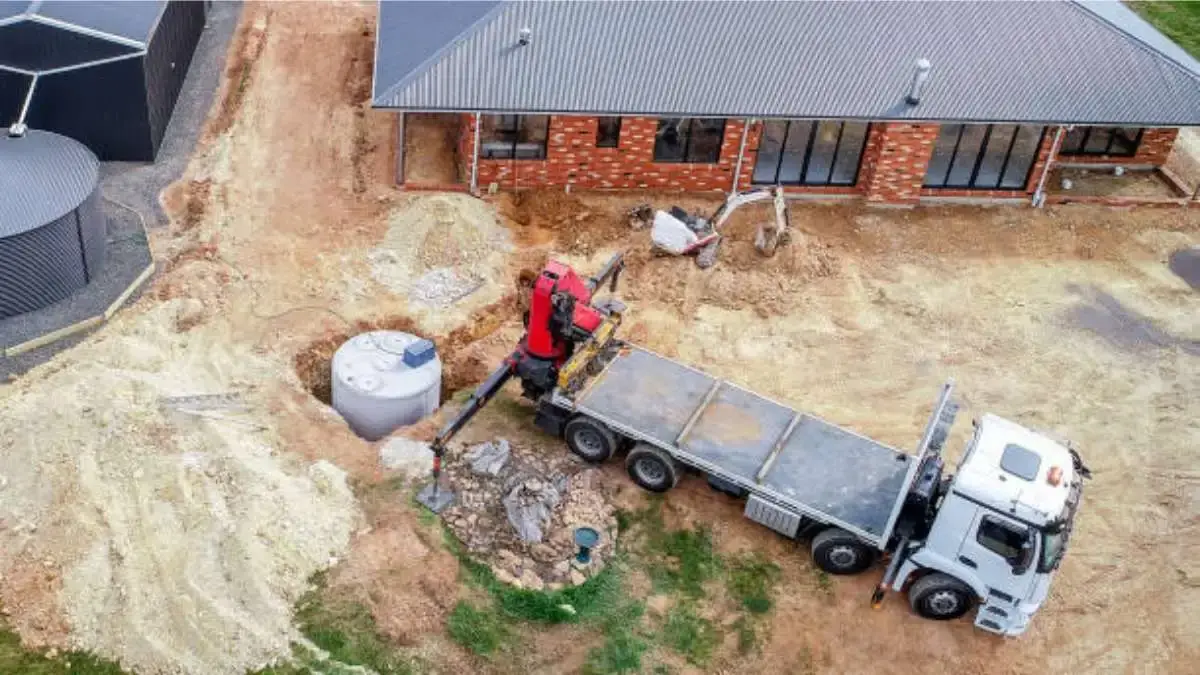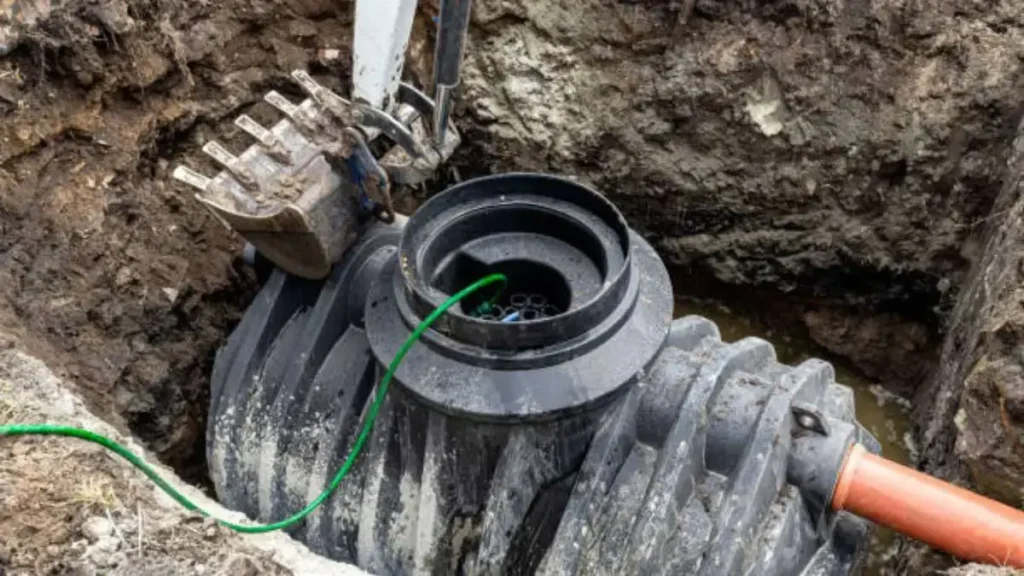HOME IMPROVEMENT
The Top Factors to Consider When Choosing a Septic Tank for Your Property

Choosing the right septic tank is crucial for homeowners. A good system ensures reliable wastewater management without frequent issues.
This guide covers essential factors to help you make an informed decision. By considering these elements, you can find a septic tank that meets your property’s needs.
Clear and simple, this information will help you avoid common pitfalls and ensure a smooth installation. Are you upgrading or installing a new system? Understanding these things is vital for long-term satisfaction and efficiency.
Table of Contents
Understanding Your Property’s Needs
Before exploring septic tanks, grasp your property’s unique needs. Each property varies, dictating the size and type of septic tank required based on several factors.
Property Size and Occupancy
The size of your property and the number of people living there are critical factors. A larger property or a higher number of occupants will generate more wastewater, requiring a larger septic tank. It’s essential to calculate the daily wastewater output to determine the appropriate tank size.
Soil Type and Drainage
The type of soil on your property affects how well wastewater will be absorbed and filtered. Sandy soils drain well, while clay soils may need more drainage solutions. Conducting a percolation test can help determine the soil’s drainage capacity and guide your choice.
Local Regulations and Permits
Different areas have specific regulations about septic tank installation. Check with your local authorities to ensure you follow all requirements. This may include obtaining permits or adhering to specific guidelines for tank size and placement.
Types of Septic Tanks
Several types of septic tanks are available, each with its advantages and disadvantages. Understanding these options can help you choose the best one for your property.
Concrete Septic Tanks
Concrete tanks are a popular choice due to their durability and longevity. They are resistant to rust and corrosion, making them a long-lasting option. However, they are heavy and may need professional installation.
Plastic Septic Tanks
Plastic tanks are light and easy to install, a popular choice for homeowners. They resist rust and corrosion but are less durable than concrete tanks and may be damaged by the environment.
Fiberglass Septic Tanks
Fiberglass tanks offer a good balance between durability and ease of installation. They are resistant to rust and corrosion and are lighter than concrete tanks. However, they can be more expensive than other options.
Size Matters
Choosing the right size for your septic tank is crucial to ensure it can handle your property’s wastewater output. An undersized tank can lead to frequent maintenance issues. While an oversized tank may be unnecessary and costly.
Calculating Daily Wastewater Output
To choose the right tank size, find the daily wastewater output. Do this based on the number of occupants and their water usage patterns. On average, a person generates around 70 gallons of wastewater per day. Multiply this by the number of occupants to get the total daily output.
Choosing the Appropriate Tank Size
Once you have the daily wastewater output, you can choose a tank size that can handle the load. Septic tanks are usually measured in gallons. It’s essential to pick one that is big enough for your needs.
Considering Future Needs
It’s also wise to consider potential changes in your household size or water usage when choosing a tank size. Planning for future needs can help avoid costly upgrades or replacements down the line.
Installation and Maintenance
Good installation and regular maintenance are crucial. They are key for the long life and efficiency of your septic system. Understanding the installation process and maintenance requirements can help you make informed decisions.

Professional Installation
While some homeowners may attempt to install their septic tanks, professional installation is often recommended. Professionals have the expertise and equipment to ensure the tank is installed correctly and complies with local regulations.
Regular Maintenance
Regular maintenance is essential to keep your septic system functioning properly. This includes routine inspections, pumping, and addressing any issues promptly. Neglecting maintenance can lead to costly repairs and potential health hazards.
Signs of Trouble
Being aware of common signs of septic system problems can help you address issues before they become severe. These signs include slow drains, foul odors, and pooling water around the drain field. If you notice any of these, it’s essential to call an expert, such as this professional septic company in Olympia.
Cost Considerations
The cost of a septic tank system varies widely based on several factors. Understanding these costs can help you budget appropriately and avoid unexpected expenses.
Initial Installation Costs
The initial installation cost includes the price of the following:
- tank
- excavation
- installation labor
Concrete tanks tend to be more expensive to install due to their weight and the need for specialized equipment. Plastic and fiberglass tanks may have lower installation costs but could be higher in material costs.
Ongoing Maintenance Costs
Regular septic tank maintenance, such as pumping and inspections, should be factored into your budget. These costs can vary depending on the size of your tank and the frequency of service. Planning for these expenses can help you avoid financial strain.
Potential Repair Costs
An unexpected septic tank repair can arise if your system encounters issues. Having a contingency fund for potential repairs can provide peace of mind and ensure you can address problems promptly.
Environmental Impact
Septic tanks play a significant role in managing wastewater and protecting the environment. Choosing an environmentally friendly option can help reduce your property’s ecological footprint.
Eco-Friendly Tank Options
Some septic tanks are designed with eco-friendly features, such as advanced filtration systems or materials that minimize environmental impact. Researching these options can help you make a more sustainable choice.
Proper Wastewater Management
Properly managing wastewater through regular maintenance and responsible usage can minimize the environmental impact of your septic system. Avoiding harsh chemicals and conserving water are simple steps you can take.
Compliance with Environmental Regulations
Ensuring your septic system complies with local environmental regulations is essential. This not only protects the environment but also helps you avoid fines or legal issues.
Consider These Factors When Choosing a Septic Tank for Your Property
Choosing the right septic tank for your property can be simple. Consider your property’s size, number of occupants, and soil type. Look at different materials like concrete, plastic, and fiberglass to see which fits best.
Think about the size to handle your wastewater now and in the future. Hire professionals for installation and keep up with regular maintenance. Always be aware of signs of trouble.
By following these steps, you’ll ensure a long-lasting and efficient septic system.
Check out the rest of our blog for more captivating reads on a wide range of topics.
-

 GENERAL6 months ago
GENERAL6 months agoChristofle – For Those Who Dream of Family Heirloom Silver
-

 SPORTS8 months ago
SPORTS8 months agoDiscover the World of Football with Streameast: Watch Your Favorite Leagues and Tournaments
-

 GENERAL4 months ago
GENERAL4 months agoUncovering the World of кинокрадко: The Dark Side of Film Piracy
-

 GENERAL2 months ago
GENERAL2 months agoATFBooru: Anime, Gaming, and Subculture Imageboard





























